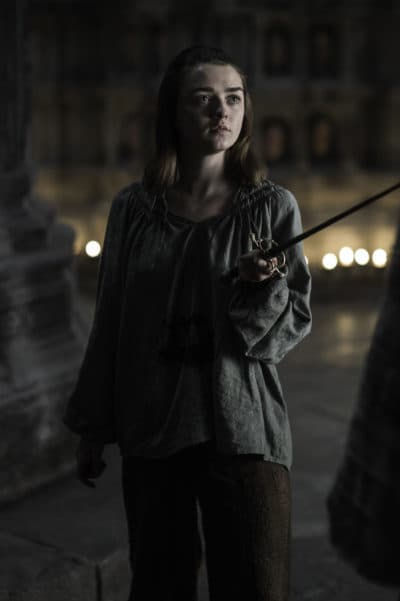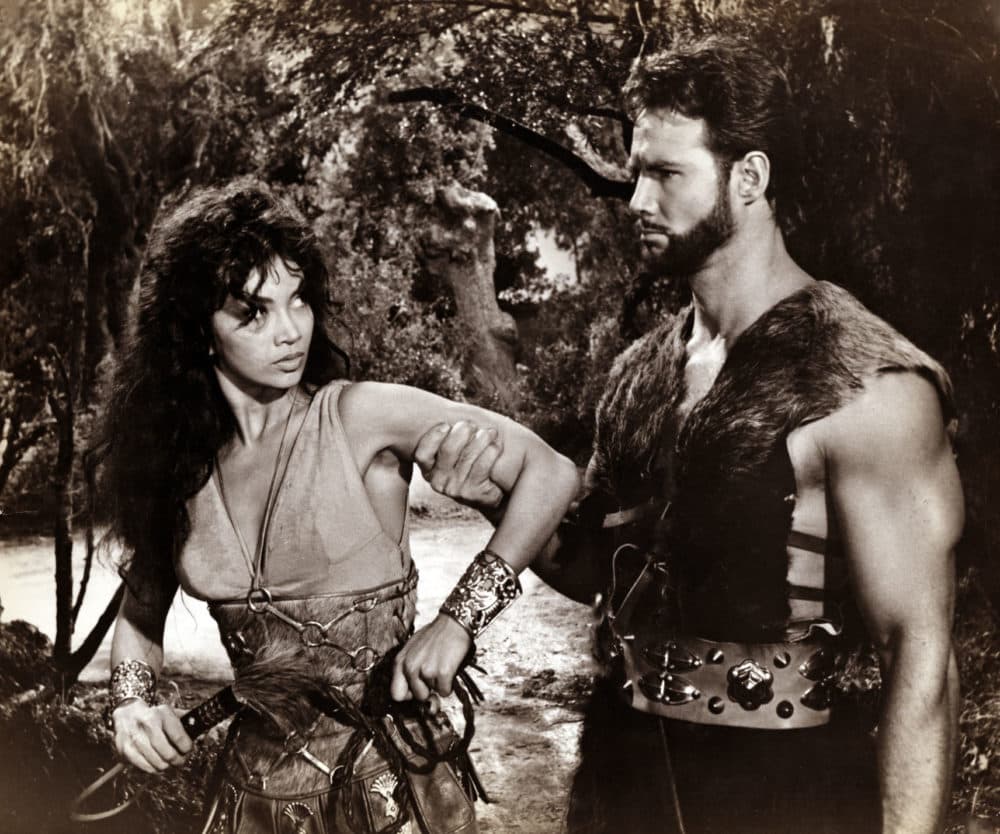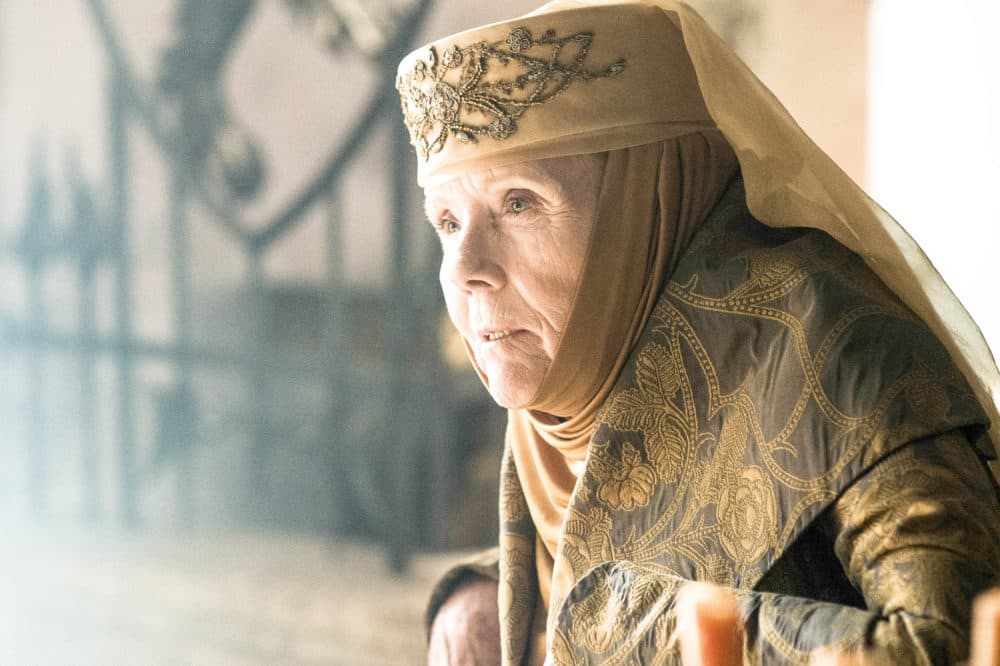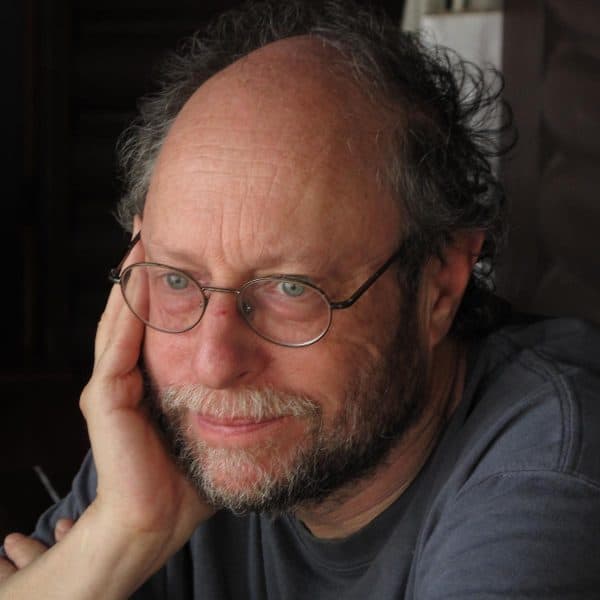Advertisement
COMMENTARY
From A 'Game Of Thrones' Naysayer To A Total Fan: How The Show Won Me Over

It’s easy to dismiss “Game of Thrones.” I should know since I spent the last eight years thinking it was just a beautifully shot dreamworld of dwarfs and dragons, sex and violence, melodrama and mythology.
I take it all back. After binging recently on all 67 episodes I think it’s right up there with “The Sopranos,” “Breaking Bad,” “Dexter” and any other show from our 21st Century golden age of television. For starters, it’s smartly written, immaculately acted and gorgeously photographed, which is hardly news to its legions of fans.
But there is still resistance in many quarters, built partly around its medieval trappings and its unapologetic violence featuring beheadings, rapes, gouged-out eyes and the most creative use of molten lead since Quasimodo turned on the Parisians storming Notre Dame.
On a personal level, “Game of Thrones” evokes almost everything I’ve felt passionate about from early childhood to something closing in on second childhood. And like a kid awaiting Santa Claus, April 14 can’t come too soon, when the final season begins. Here are my favorite things about the series:
Swashbuckling
I grew up addicted to the Robin Hood and King Arthur stories — the books, movies and TV series — along with anything that had Zorro in the title. I used to steal my mother’s knitting needles and re-enact sword fights between the heroes and the heavies.
God knows what kids are using to re-enact “Game of Thrones” swordfights, but they are the most entertainingly choreographed swashbuckles since Errol Flynn and Tyrone Power took turns perforating Basil Rathbone in the Robin Hood and Zorro movies. Flynn, Power, Richard Greene and all the others were welterweights, though, compared with the heavyweight longsword bludgeoning of The Hound and The Mountain, or even the more stylish dueling of Jon Snow, Jaime Lannister and Bronn.

But there are two important differences. It’s not just a boy’s world anymore; girls just want to have fun with foils, too. Not even Jaime wants to go up against Brienne of Tarth any longer. And I love that Arya named her sword Needle.
“Game of Thrones” is hardly unique in this regard; pop culture is awash in female warriors today, though Brienne, Arya and the Sand sisters are something else. It’s fascinating that an early female avenger, literally, was Diana Rigg as Emma Peel, who did not rely on Mr. Steed to be the male savior in “The Avengers.” It was fun to see her cast her don't-mess-with-me spell again in “GoT,” despite remaining seated.
The other difference is that “Game of Thrones” does not hide the agony of war. Even bad Basil Rathbone always died a pretty bloodless death. When the good guys, and occasionally gals, died it looked about as painful as a flu shot and, as they clutched their stomachs, they would often head off to the next world following a dazzling piece of oratory. In “Game of Thrones” blood spurts from pores you might not even have known existed, the poisoned die excruciating deaths, babies are torn from their mothers and murdered.
I used to think that realistic deaths made more of an anti-war statement than the romantic deaths of the 1940s and ‘50s. Just look at the testimony of those who went off to Vietnam thinking they were John Wayne in "Back to Bataan" and came back more like John Savage in the “Deer Hunter.” I wouldn’t argue that the violence of “Game of Thrones” leads its audience anywhere near nonviolence, but it does strip illusion away. You can have your knitting needles back, Mom.
There is also a hard-headed approach to the lack of a life after death. Robb Stark is told that songs will be written for those who sacrificed their lives in battle. “But the dead won’t hear them,” he replies. And Jon Snow reports no white lights before he was brought back from the dead. Executive producer David Benioff wrote his thesis at Trinity College in Dublin on Samuel Beckett and the acceptance of the abyss shows. (He met fellow American and show runner D. B. Weiss at Trinity. Weiss wrote his thesis on James Joyce.)
Sex
Oh, Lordy. HBO didn’t invent sex on TV, but it has made it into a non-pornographic art form, nowhere more evident than in “Game of Thrones.” But even here, there’s pubescent precedent. I remember late-night TV from the ‘60s featuring what were called sword-and-sandal epics, mostly Italian films that were poorly dubbed in English. The men playing Hercules, Samson et al were mostly body builders like Steve Reeves. Some had even been cast in Mae West’s touring revue, like Mickey (father of Mariska) Hargitay.

As for the women, what straight teenage boy in the ‘60s could resist the low-cleavage charms of Sylva Koscina, Gianna Maria Canale or Chelo Alonso? Well, madames e messrs, you all have nothing on Emilia Clarke, Nathalie Emmanuel, Kit Harrington or Nikolaj Coster-Waldau.
Actually, it’s Clarke, Emmanuel, Harrington and Coster-Waldau who have nothing on, at least in well-timed canoodling on the show. This is not a complaint. Nor, I hope, is it dirty old manhood. If anything, the romantic scenes involving the above folks reflect a much healthier attitude toward sex than the measurement-obsessed calculations of the sword-and-sandal ‘60s. Well, maybe not Jaime and Circe’s incestuous get-togethers, but even there Benioff and Weiss take a mostly nonjudgmental position.
Some have expressed understandable discomfort with the rape scenes in “Game of Thrones.” On the other hand, I can’t think of any such scene in which the perpetrator was anything but loathsome and the actions anything but repulsive. These are not, at least in my eyes, gratuitous sex scenes.
Feminism
Not only are the women handy with swords in “Game of Thrones,” they are also often stronger, smarter and better at ruling than the men. (If only American voters were as enlightened as George R.R. Martin and show runners David Benioff and D.B. Weiss.) If the men aren’t outright fascists like Joffrey Baratheon and Ramsay Snow, they are venal (Charles Dance’s Tywin Lannister) or easily led astray (Stephen Dillane’s Stannis Baratheon).
Given a choice between them and abolitionist Daenerys Targeryn or the suddenly shrewd Sansa Stark of last season, who would you rather see govern?
There are other enlightened portrayals as well. Peter Dinklage’s Tyrion Lannister is perhaps the most sympathetic and charismatic character on the show and all good rulers need an adviser like the eunuch Varys, who delivered the line of the series thus far: "Why is it always the innocents who suffer most, when you high lords play your game of thrones?"

Theater
Dinklage and Conleth Hill, who plays Varys, are indicative of the phenomenal acting on “Game of Thrones.” Many, like Dance and Rigg, are award-winning stage actors, cutting their acting teeth with the Royal Shakespeare Company and other British or Irish companies. Not that American HBO all-stars like Julia Louis-Dreyfus and the late James Gandolfini can’t hold their own with the Dances and Riggs of the world, but “Game of Thrones” gets the vibe it’s looking for from the less colloquial diction delivered across the pond. (Dinklage, a Bennington College alum and one of the few American actors, can go Brit with the best of them.)
Almost from top to bottom, these are amazing actors. You can see it in the little things like Dillane muttering under his breath “fewer” after some lout incorrectly shouts out “less enemies for us.”
Dillane, incidentally, is a jaw-droppingly great actor onstage. I remember being wowed by him in a remake of “The Real Thing.” You can see how good these actors are in other roles if you don't believe your eyes and ears in "Game of Thrones." Just watch Richard Madden (Robb Stark) in “Bodyguard” on Netflix. When “Game of Thrones” first came on I thought these actors were slumming, but all you need to do is watch Rigg at work in every scene she’s in or Dance strut his regal stuff to know that they take this material seriously and are giving their all. Which doesn’t stop them from having serious fun with their roles.
Writing And Metaphor
Back in my pooh-poohing days a friend said that “Game of Thrones” was Shakespearean in its story-telling. I dismissed this as typical "GoT" hyperbole and snobbily refused to drink the Kool-Aid.
Now I think he was right on. The villainy of a Ramsay Snow recalls Richard III. Tyrion’s attempt to save his lover Shae results in her sad betrayal of him, though unlike Othello he lives to fight another day. Stannis’ Macbeth-like belief in the witch's prophecy leads to unspeakable tragedy for him and his family. Will Jon Snow and Daenerys emerge like the blissful Beatrice and Benedick or plunge to their death like Antony and Cleopatra?
Who knows, since the series has now gone beyond the books. I’m still enough of a romantic to root for a happy ending, but Martin’s lack of sentimentality in the books and the show runners’ in the series might point to a more realistic ending. I would rather doubt, though, that the zombie-like White Walkers will be triumphant.
Anyone can copy Shakespearean plotting – he did a fair share of copying on his own — but the writing here is as solid as the storytelling. Here’s a sample of Dinklage’s Tyrion, part Falstaff and part Marc Antony in “Julius Caesar.”
(One difference between casting in “Game of Thrones” and Shakespeare revolves around race. Most Shakespearean productions today mandate color-blind casting, except for “Othello.” That is not the case in the mostly white power structure of “Game of Thrones.” The producers obviously thought that color-conscious casting was integral to the story-telling, which was a wise decision. The unfortunate result, though, was keeping people of color relegated to fewer, powerless, smaller parts.)
Just as it’s hard to watch Shakespeare's histories and tragedies these days without thinking about current events, it’s impossible to watch “Game of Thrones” without thinking about today’s world of tribal politics, religious fanaticism and fear of the other.
The show, however, is not after equivalence. Its heart is clearly with the outcasts — the dwarfs and the bastards, the eunuchs and the gender-busters. Its greatest hero, Daenerys, is a one-woman John Brown in her crusade against slavery. There is no alt-right interpretation of the show that makes any sense and that’s all to the good.
When I covered television for the Boston Globe in the ‘90s I devised a ratings code in which one star translated to the dismissive “Worth watching if you’re sick.” That would have to be revised in our world of binging. I watched all 67 episodes thus far while recuperating from a stubborn illness. Now getting sick is an excuse to catch up on great television that you’ve missed rather than watch mindless drivel.
One thing hasn’t changed: The highest rating, four stars, meant “worth staying home for” in the old ratings system. I don’t plan to be anywhere but in front of my TV at 9 p.m. Sundays for the final six episodes. Rock on, Danaerys. Rock on, dragons.





